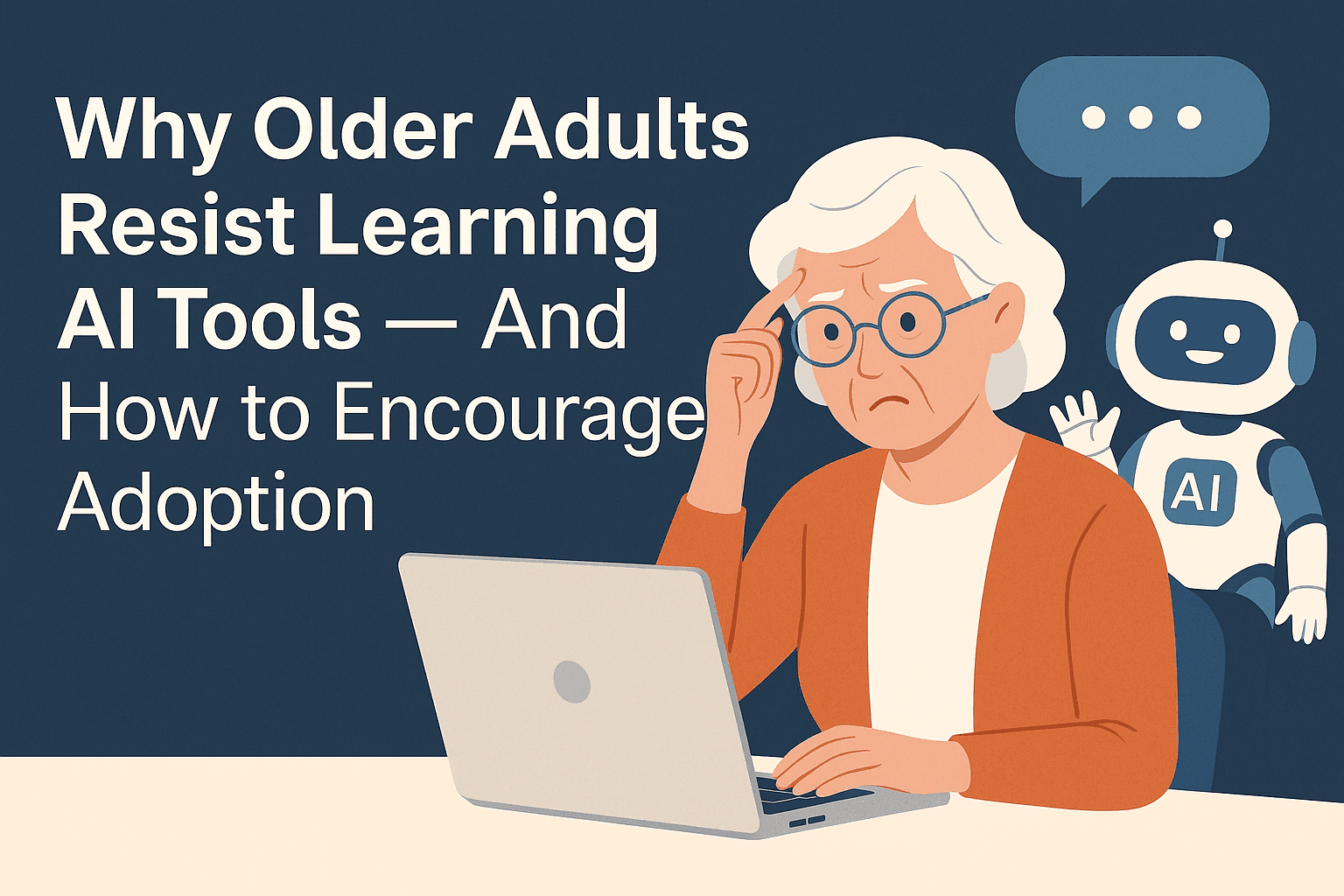
Artificial intelligence is changing everything in today's technologically advanced society, including how we handle our everyday jobs and interact. Younger generations, meanwhile, are fast to adopt AI-powered technologies, but many older folks are still apprehensive. Fear, unfamiliarity, and a lack of specialized support are frequently the causes of this resistance rather than a lack of intelligence or competence. We'll look at the actual causes of older persons' resistance to learning AI products in this piece, as well as the usability issues they encounter and offer helpful tips for facilitating their comfortable and confident technology adoption.
Introduction: It's Not About Age — It's About Approach
As artificial intelligence becomes a part of everyday life — from writing tools to voice assistants — many older adults are hesitant to embrace it. But that hesitation isn’t about ability. It's about how AI is introduced, explained, and supported.
This blog explores the reasons why older people resist learning AI tools, the usability challenges they face, and how to encourage adoption in a way that’s meaningful, respectful, and effective.
Why Older Adults Resist Learning AI Tools
1. Fear of Breaking Something
Many seniors worry they’ll press the wrong button or “mess things up.” This fear of making mistakes often leads to hesitation.
2. Overwhelming Terminology
Tech words like "algorithms," "machine learning," and "language models" feel foreign. Without simplified explanations, AI can seem too complex.
3. Lack of Clear Benefits
If a tool doesn’t clearly improve their daily life — like helping with health, finances, or communication — they may not see the point in using it.
4. Trust and Privacy Concerns
Many older users worry about how their data is used or shared. If an AI tool isn’t transparent, trust becomes a barrier.
5. Limited Exposure or Training
Some older adults simply haven't been introduced to AI through familiar channels, like community workshops or family support.
How to Encourage AI Adoption Among Older Adults
Use Familiar Platforms
Start with tools they already use, like voice assistants (Alexa, Google Assistant) or YouTube suggestions. These feel natural and non-intimidating.
Explain Benefits Clearly
Instead of “Try this AI writing tool,” say “This app helps you write faster emails.”
Offer Patient, Hands-On Support
Whether it’s one-on-one tutoring, video demos, or printable guides — gentle guidance makes a huge difference.
Simplify the Interface
Large fonts, fewer options, and clear navigation make AI tools more usable for everyone — not just older adults.
Share Success Stories
Hearing from peers who’ve learned AI tools successfully builds confidence and curiosity.
Frequently Asked Questions (FAQs)
1.What are the main reasons older people resist learning AI tools?
Older adults often resist AI due to fear of breaking something, confusing terminology, unclear benefits, or privacy concerns.
2.What are the biggest AI adoption challenges for seniors?
Usability, trust, and lack of training are the main challenges. Most tools aren’t built with accessibility in mind.
3.Can older adults really learn AI tools?
Absolutely. With the right teaching style and support, seniors are fully capable of learning and using AI in everyday life.
4.What is “usability” in AI, and why does it matter?
Usability refers to how easy and intuitive a tool is to use. Good usability in AI tools makes them more accessible for older users — and everyone else too.
5.How do I teach AI tools to my grandparents or older clients?
Start small. Show how the tool helps them personally (e.g., reminders, writing, health tracking), and explain things slowly with relatable examples.
Final Thoughts: AI Belongs to Every Generation
When it comes to AI, older adults don’t need less — they need more clarity, more support, and more connection to real-life value.
They’re not resisting change — they’re waiting for change that respects their pace, their knowledge, and their needs.
Let’s make AI a tool for inclusion, not just innovation.